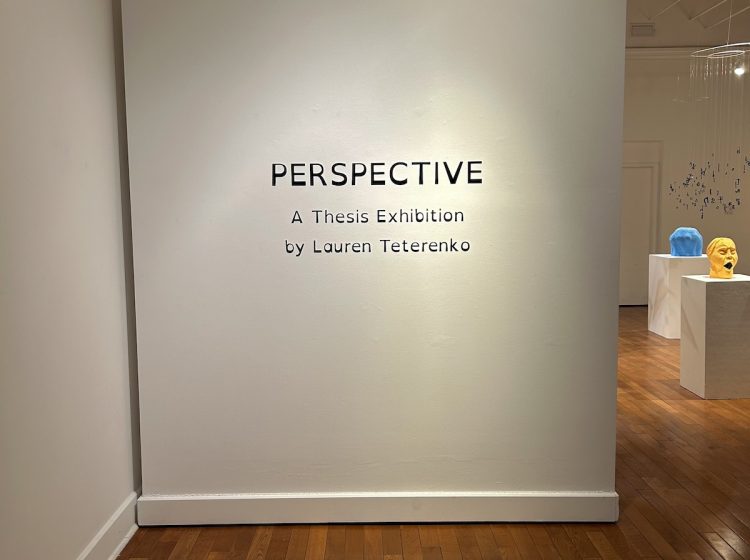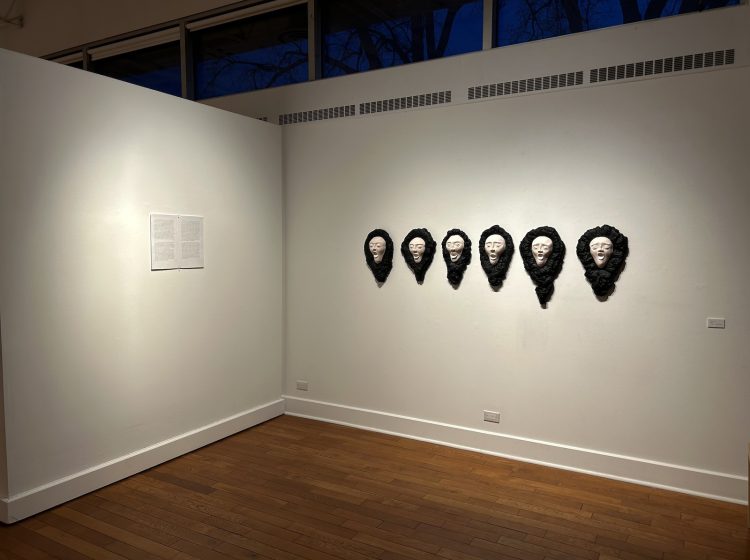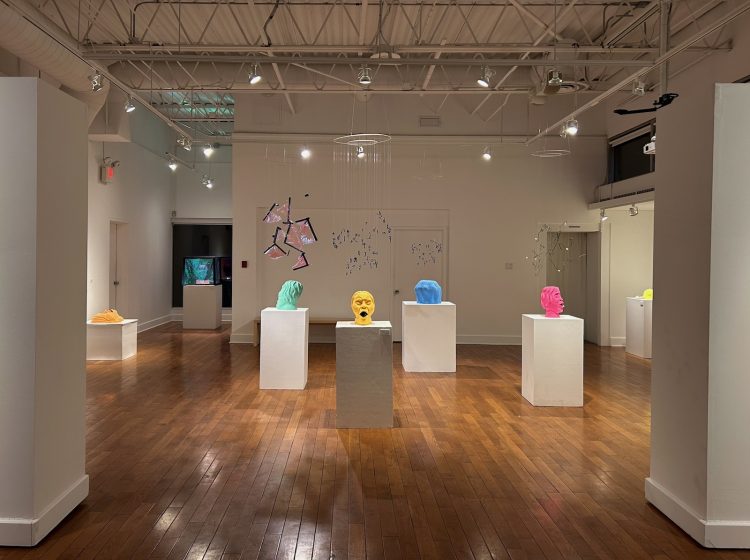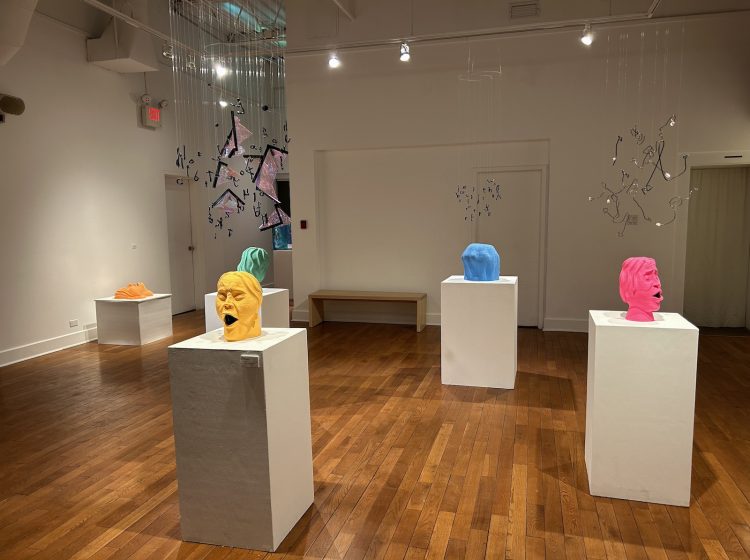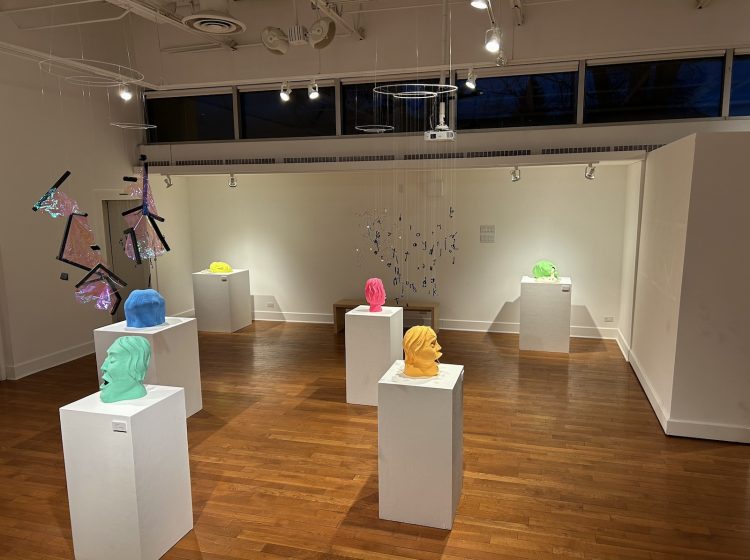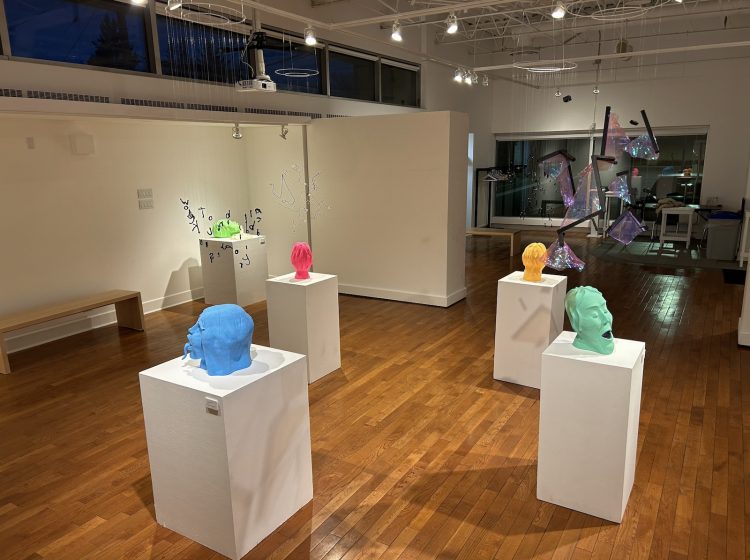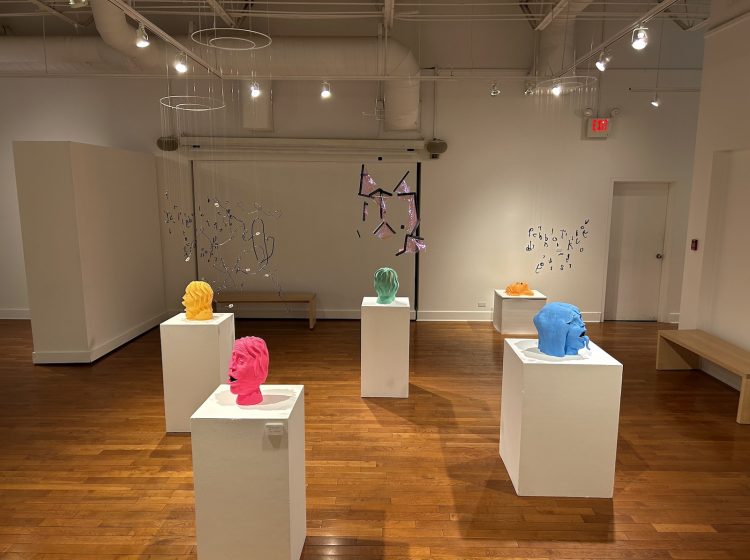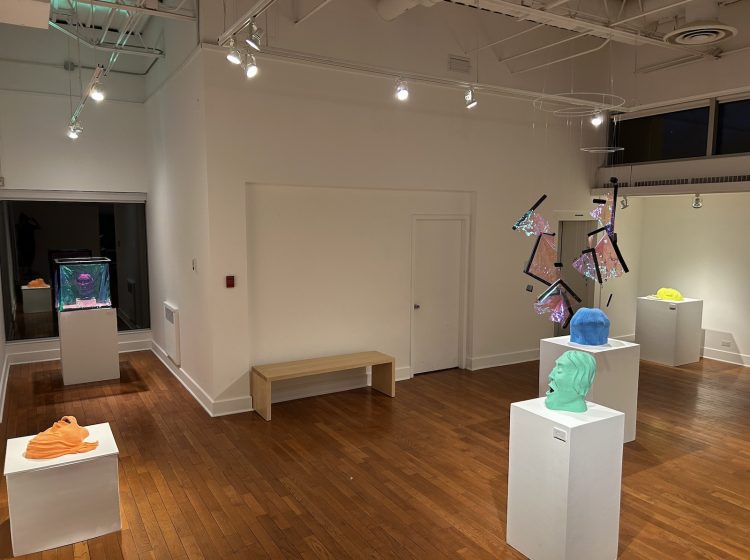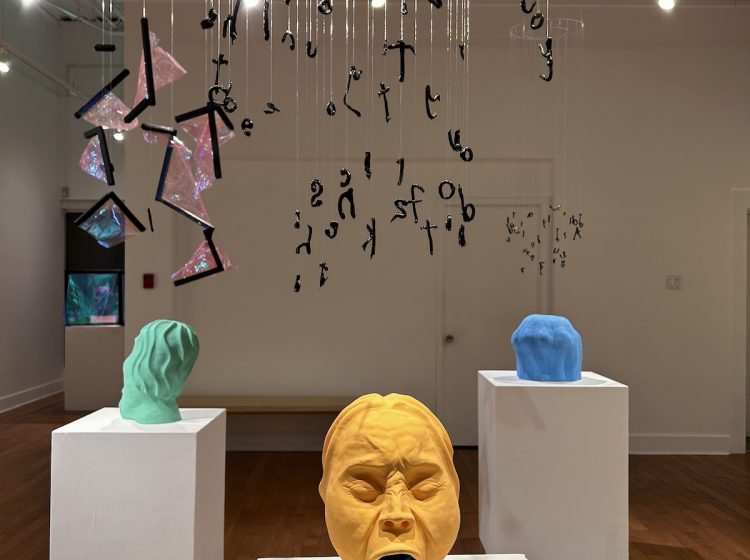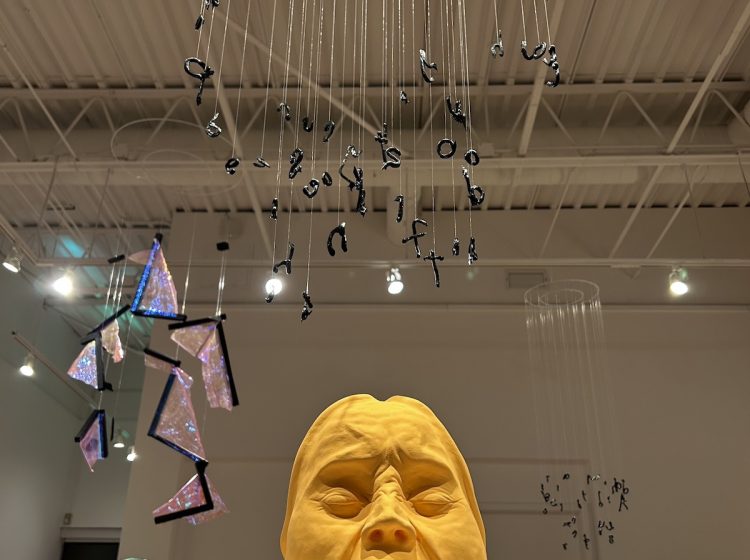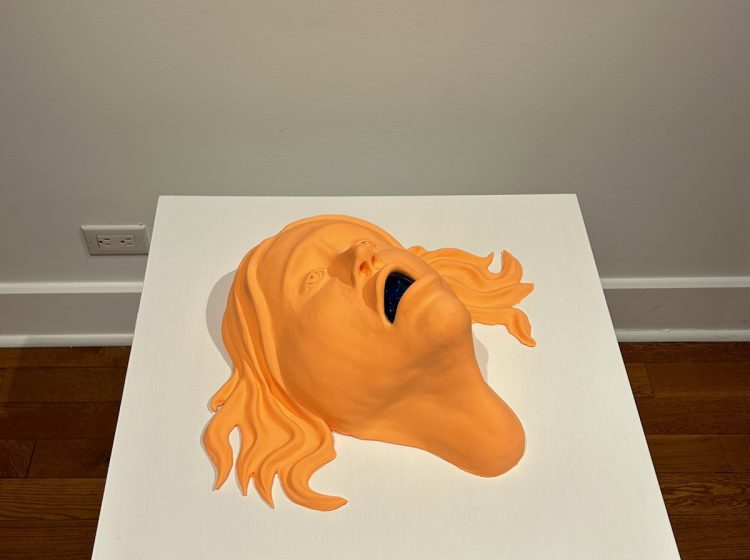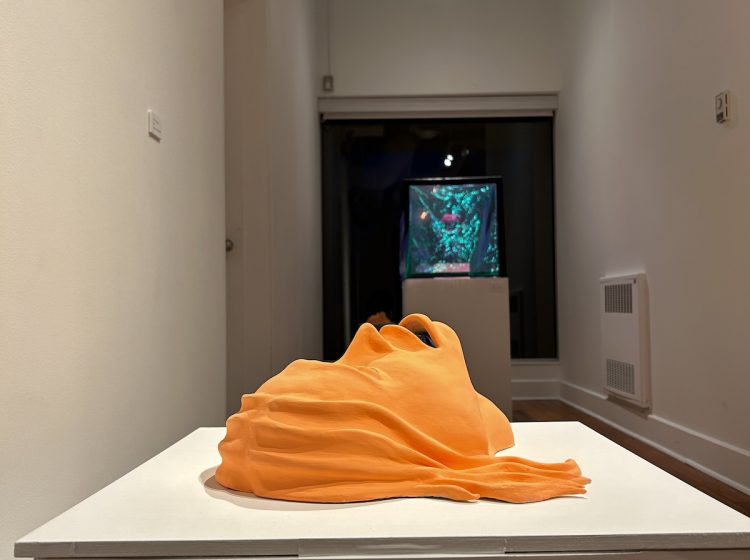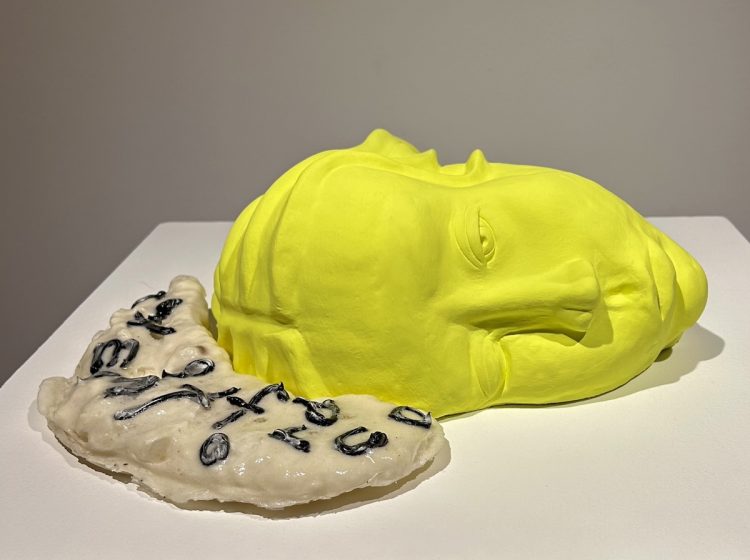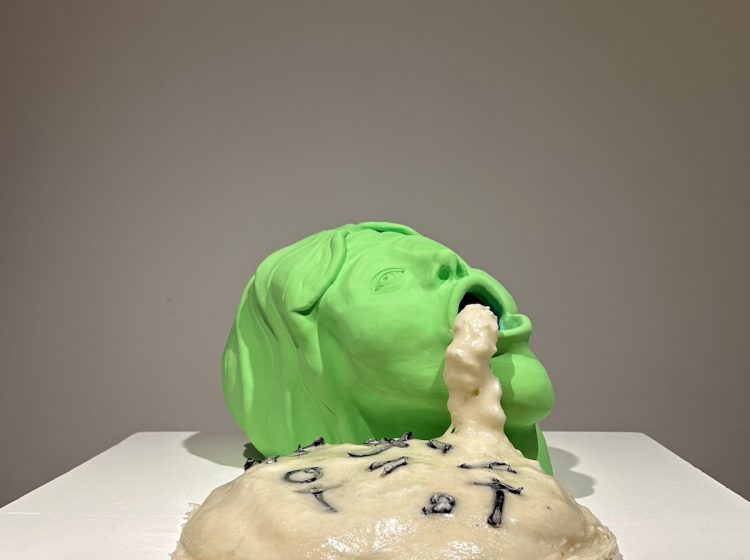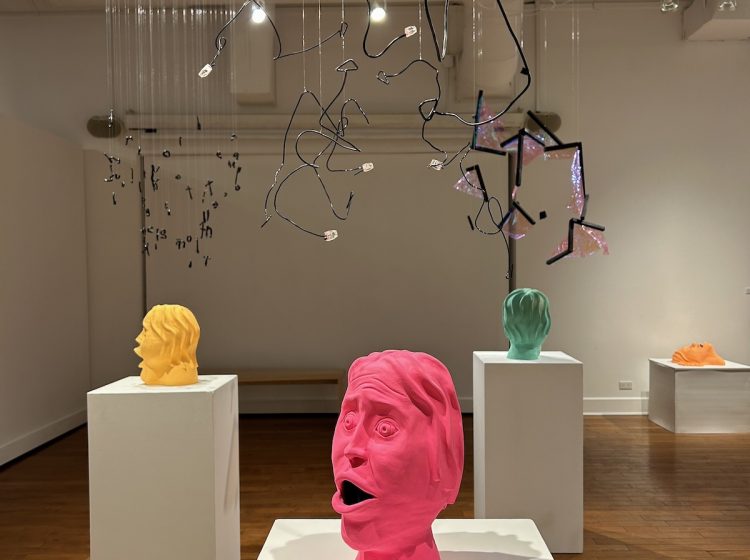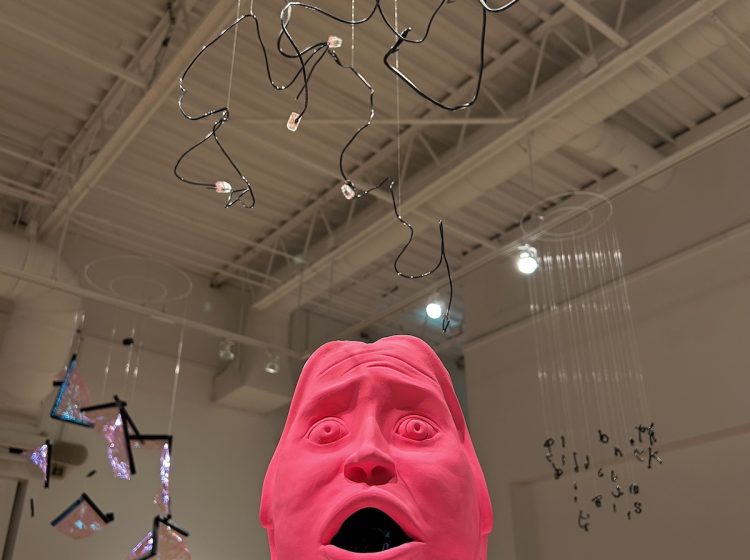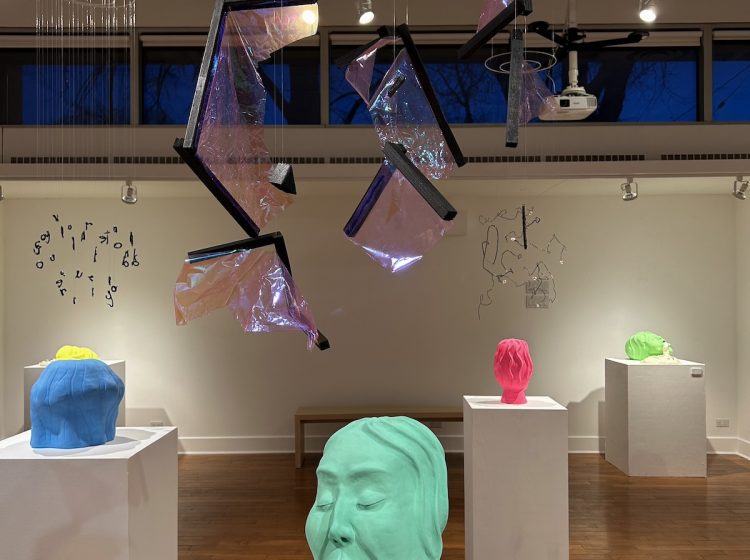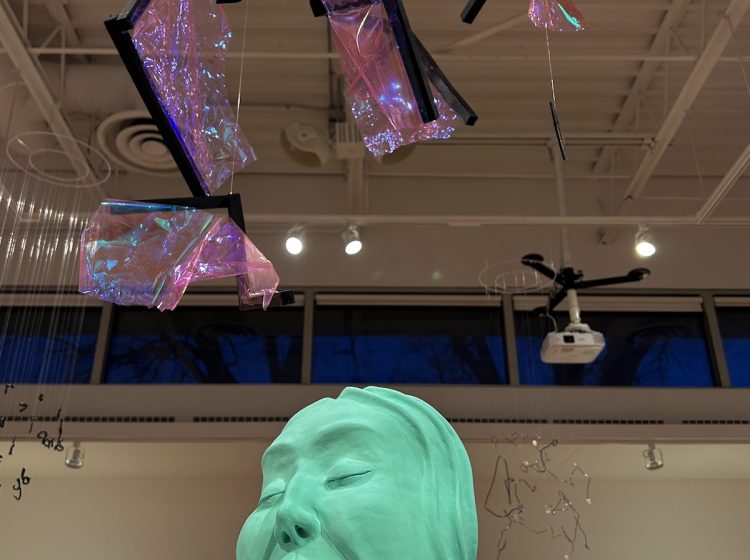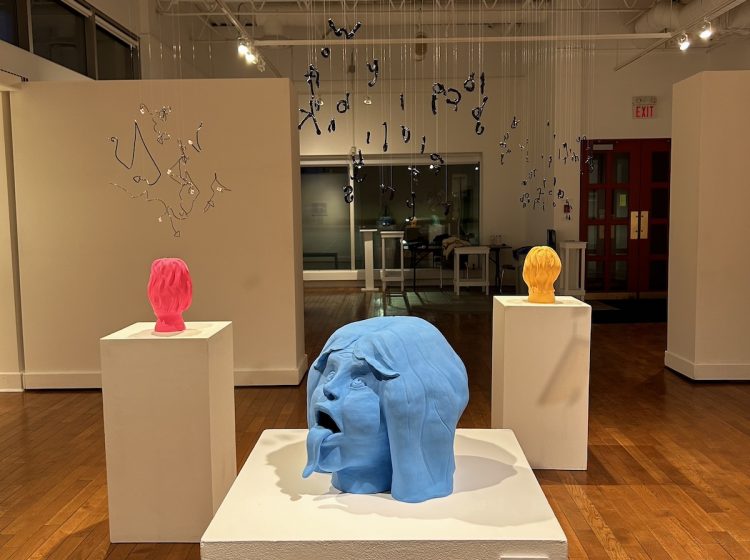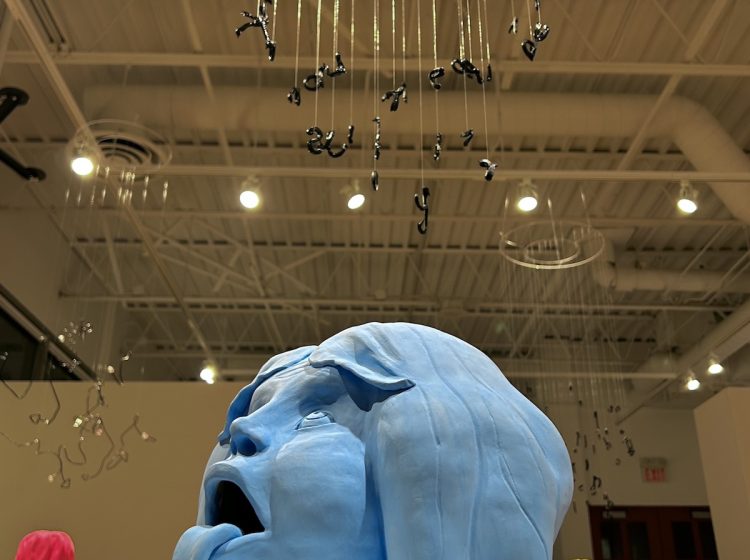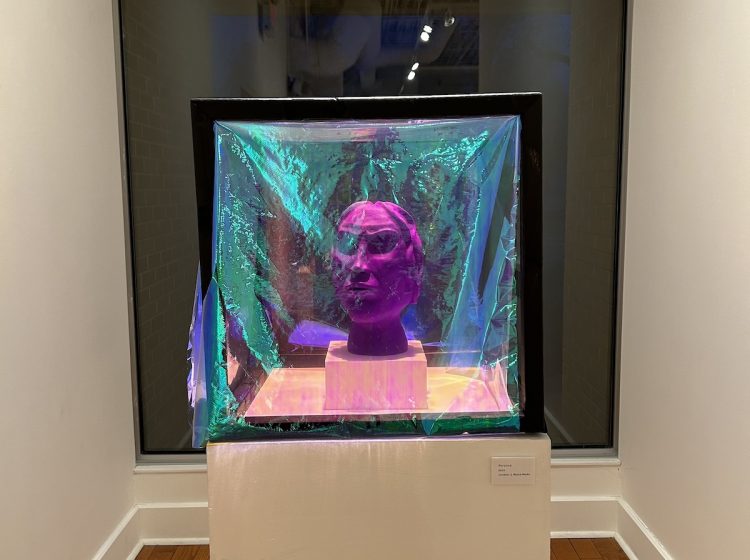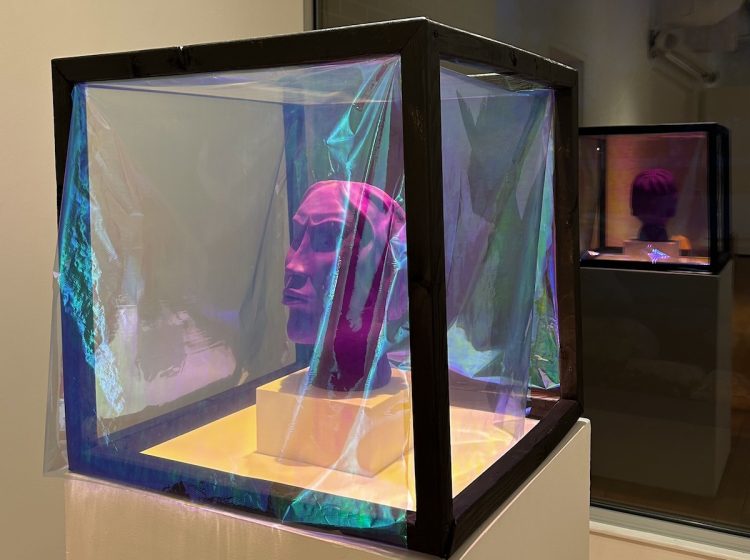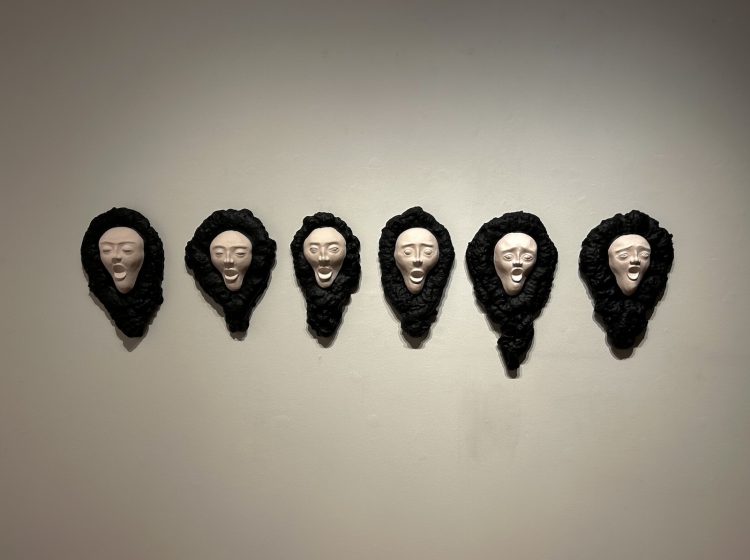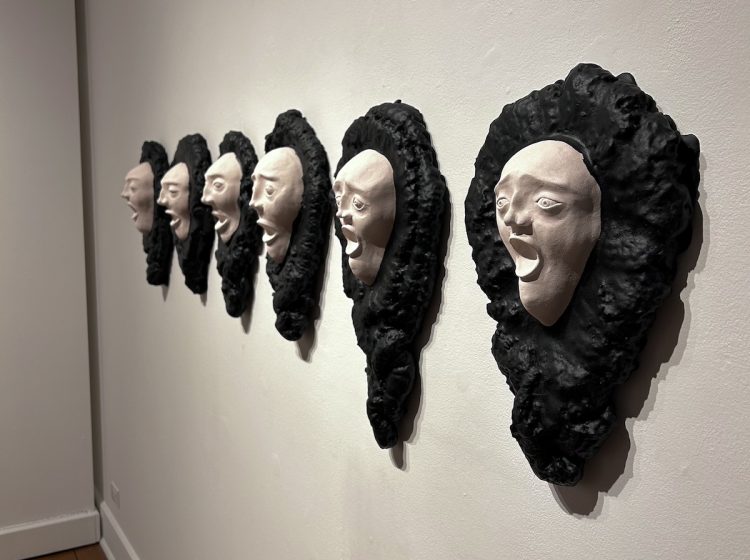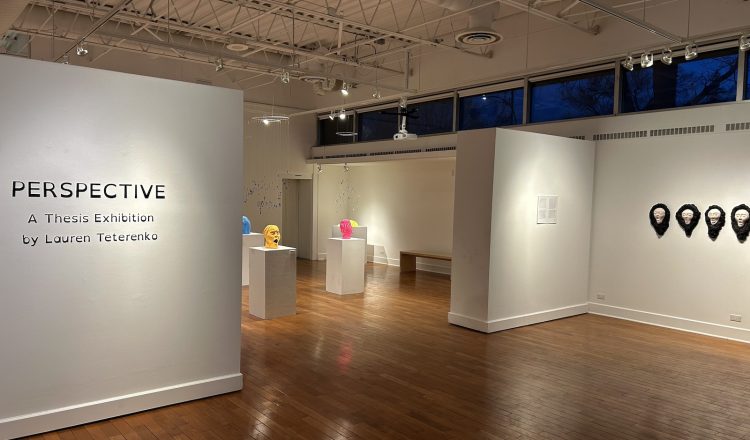Perspective
A Thesis Exhibition by: Lauren Teterenko
Artist Statement
As a neurodivergent artist, my perspective is influenced by my neurodivergent brain. Perspective intends to explore this concept, and to immerse the viewer in my own lived experience. I find many aspects of my everyday life overwhelming and chaotic. I may focus on the wrong task at hand, I feel emotions more intensely than others, I often have difficulty understanding behaviour within peer groups. These are traits that influence my personality and, by extension, my art. While I am around others, I analyze my surroundings to hide or regulate my natural instincts so I can blend into my environment. In neurodivergent communities, this is commonly referred to as “masking”. This body of work, Perspective, is intended to take viewers alongside me in this lived experience, to ask them to experience the masking I do. As I navigate this cacophonous, chaotic world, filled with the noises, smells, movement, and energy of innumerable moving parts, I sometimes feel overcome by adversity. But often, I am inspired. My eyes seek to analyze composition, colour palettes, and symbolism in everyday tasks, such as traffic jams, sunrises, or people-watching. My neurodivergent brain is particularly suited to make meaning out of chaos and to adapt; to create.
Perspective represents the intersection of these two ideas: the lived experience of self-regulation I do on a daily basis, and the transformation of chaos into art. When I censor my neurodivergence in public, I have inflicted upon myself an inherent loss of self-identity. This project reframes and exposes my sensory experiences, allowing me to be vulnerable with the viewer. By allowing the viewers to experience the masking I do, I intend to reclaim my own sense of
identity. Perspective is a series of distorted self-portraits made from clay, captured in multiple emotional states, that are surrounded by disjointed elements. This is intended to be a reflection of the way I experience my environment: chaotic, disjointed, and with exaggerated emotion. The decision to use clay was made because of the dual nature of clay: first, it is malleable, easily manipulated and edited. This reflects my own nature as I shift and change, masking my way through social situations. Then, once fired, clay becomes totally, irrevocably permanent. It is unchanging, and its solidity reflects how concrete my image becomes to others once I am perceived.
The choice to use intensely pigmented neon colours is intended to immerse the viewer in the staggering sensory experience which reigns in my neurodivergent brain. The sculptural portraits do not stand alone; some are surrounded by cages. The cages symbolize the control I exert over myself and my surroundings. Even when the cages break or shatter, they never cease existing: I always seek to remain in control. The addition of slime, and spray foam are meant to represent chaos. These materials demonstrate just how little control I really have, and show how there will always be elements I cannot manipulate to match the rest of my environment. The bright colours and natural distortion of these disjointed materials adds to the overall sense of overwhelm intended in this work. The text found throughout the body of work consists of impactful phrases spoken to me by professors, peers, and strangers. I have written these words in my own writing and incorporated them into my work as a symbol of how profoundly these comments have impacted my self-concept. To further immerse the viewer in my own neurodivergent experience, I have represented these words and phrases the way I would see them in my mind– with some letters confused, flipped, or otherwise scrambled.
Finally, I have chosen to incorporate music into my body of work. In addition to being a visual artist I am also a musician, and I have found that music is a place of rest for my mind. My choice of music in Perspective provides a contemplative whispering for the viewer amidst the chaos of the rest of the exhibition. I performed the music on multiple instruments and recorded it myself, in order to create an inquisitive experience for the viewer to discover inside some self- portraits. Outside of the sculptures show the disorder and negatives of my internal process, while paradoxically, inside of the sculptures contain the positives I have found in my neurodivergent mind. The music may seem disconnected on its own, but as viewers experience more of the exhibit, they will understand that the “inner monologue” of all the busts is the same poly-tempo music. With the addition of music, a positive outcome from my neurodivergent brain echoes throughout the hall, coming from inside the chaos and overwhelm and emerging to triumph over negativity.
Click to enlarge image
